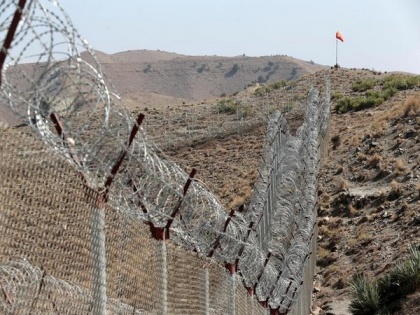Fencing of Afghan-Pakistan border to be completed by June 30, says Pak interior minister
By ANI | Published: June 20, 2021 09:31 AM2021-06-20T09:31:09+5:302021-06-20T09:40:02+5:30
The fencing of the 2,600-kilometer Afghan-Pakistan porous border will be completed by the end of June, Pakistani interior minister Sheikh Rashid Ahmed told the country's Parliament.

Fencing of Afghan-Pakistan border to be completed by June 30, says Pak interior minister
The fencing of the 2,600-kilometer Afghan-Pakistan porous border will be completed by the end of June, Pakistani interior minister Sheikh Rashid Ahmed told the country's Parliament.
Addressing the Pakistan National Assembly in a budged discussion, Ahmed said 88 percent of the work has been completed and the rest will be done by June 30, Dawn reported.
As foreign troops are withdrawing from Pakistan, Rashid noted that the next two to three months were very important for Pakistan also.
"Right now infighting is going on at some 38 locations in Afghanistan," he said, explaining that as many as 2,400 Afghan personnel had joined the ranks of Taliban.
Islamabad started fencing its border with Afghanistan in March 2017, after a spate of deadly attacks from Afghan-based Pakistani terror groups.
According to Al Jazeera, the border barrier consists of two sets of chain-link fences, separated by a 2-meter (6-foot) space filled with concertina wire coils.
The double-fence, which is 3.6 meters high (11 feet) on the Pakistani side and 4 meters high (13 feet) on the Afghan side, is fitted with surveillance cameras and infrared detectors.
Moreover, nearly 1,000 forts are also being constructed along the border to increase security.
The cross-border movement will only be allowed through 16 formally designated crossing points after the completion of the project, which is expected to cost more than USD 500m in total.
For the last two decades, the regions surrounding the Durand Line have been used by armed groups, such as the Haqqani Network, al-Qaeda and the Tehreek-e-Taliban Pakistan (TTP), to conduct attacks both in Pakistan and Afghanistan.
Kabul has long accused Pakistan of providing sanctuary to the Afghan Taliban. Islamabad, on the other hand, has raised similar concerns about TTP's presence in Afghanistan.
( With inputs from ANI )
Disclaimer: This post has been auto-published from an agency feed without any modifications to the text and has not been reviewed by an editor
Open in app